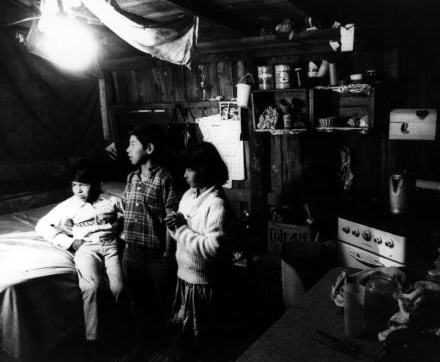Last updated: March 18, 2022
Lesson Plan
César’s Road, Rangers in the Classroom Program

- Grade Level:
- Lower Elementary: Pre-Kindergarten through Second Grade
- Subject:
- Literacy and Language Arts,Math,Social Studies
- Lesson Duration:
- 60 Minutes
- State Standards:
- Second Grade:
CC L2.5.B; CC2.MD.C.8
Third Grade:
CA History 3.4.6
Essential Question
How can childhood experiences lead to adult actions and decisions?
Objective
Through the exercise, students will experience what Cesar experienced as a young child of a family of migrant farmworkers. They will be able to:
Distinguish shades of meaning in verbs and adjectives.
Solve problems using money.
Study the lives of those who rook risks to secure our freedoms.
Background
This program is currently set up as a Rangers in the Classroom Program. However, materials can be requested so teachers can use this lesson plan on their own. To request materials, please call 661-579-6134 or email us.
Introduction: Many people have heard of César Chávez and how he fought for rights and justice for agricultural workers—but what were the conditions that nurtured his activism? The class listens to Amelia’s Road, a picture book about a little girl in a family of migrant farmworkers whose childhood mirrors César’s. They put themselves in her shoes through an imagining activity, then participate in a math activity designed to show how difficult it was for migrant farmworkers to have stable housing. Finally, they learn about how César Chávez fought for better conditions for farmworkers and make predictions for Amelia’s future.
Preparation
Materials:
- Amelia’s Road by Linda Jacobs Altman
- Laminated photos of farm worker houses (six)
- $50 in play money per group
- Cards for game-6 sets (provided upon request)
- Powerpoint software
- presentation (provided upon request)
Preparation: Make $250 in fake money, enough “union cards” for each member of your class, and six sets of cards using the printables which follow. Alternatively, another type of token could be used for the money, and the union cards are optional.
Procedure
- Read Amelia’s Road by Linda Jacobs Altman.
- Transition: Review the photos in the book that show Amelia’s house. Ask students what they notice about the books illustrations. For example, Amelia’s Mom is washing clothes in a galvanized tub and hanging the clothes on a line—there is no clothes washer or dryer. The houses are described as “grim, grey shanties.” Discuss the questions on Slide 2 about Amelia’s future (refer to powerpoint presentation provided by Cesar Chavez National Monument staff).
- Show slides of farm worker housing (slides 3-8). These photos were taken between 1930 and 1970. Have them discuss what it would be like to live in this “house.” How would it be different from where they live?
- The Game: Put students in groups of 3-5. Show the slide of the $11 house, slide 8 (in 2016, this would cost $197.40 per month). Tell students that in order to win the game they need to end with at least $11 to pay the rent on their shack. Give each student $6 in play money to start the game. Give each group a stack of the leftover money and a stack of cards.
- Now introduce the idea of a union: tell students it’s like a club for workers. You pay a little bit to join and be a part of the union, and the union will help you if you have problems. Ask the students if they’d like to give up a dollar to join the union. Collect dollars and give out union cards to any students willing to join. Announce a method for choosing who goes first (oldest student, youngest student, counter-clockwise, etc.). Students take a card and follow the instructions. Slide 10 will help students determine what to do. After 10 minutes, or when students have gone through all the cards, stop the game. Ask who has eleven dollars to pay the rent. If you don’t, what will you do next? Discuss options.
- (Slides 11 and 12) Compare/contrast Cesar Chavez and Amelia. Both:
- Were from families of migrant farmworkers
- Changed schools a lot. Cesar went to 38 different schools before he dropped out in the 8th grade!
- Dreamed about a better future.
Cesar’s family did once own their own farm, but they lost it in the great depression.
- Review slide 13. When he grew up, Cesar decided to do something about the problems faced by farm workers. He studied how to organize people to work for change. Many people were inspired to work with him.
- Review slide 14. A strategy is a way of getting something done. Some of the strategies used by Cesar and his followers were marches, speeches, strikes, meetings, and boycotts. Define these terms as needed.
- Review slide 15. Cesar worked for farmworkers’ rights until he died in 1993. In 2012, President Obama dedicated a new National Monument to Cesar Chavez. The monument is near Tehachapi, California. The headquarters of Cesar’s union, the United Farm Workers, is part of the monument.
- Review slide 16-it shows examples of current housing for farm workers in the Central Valley of California.
